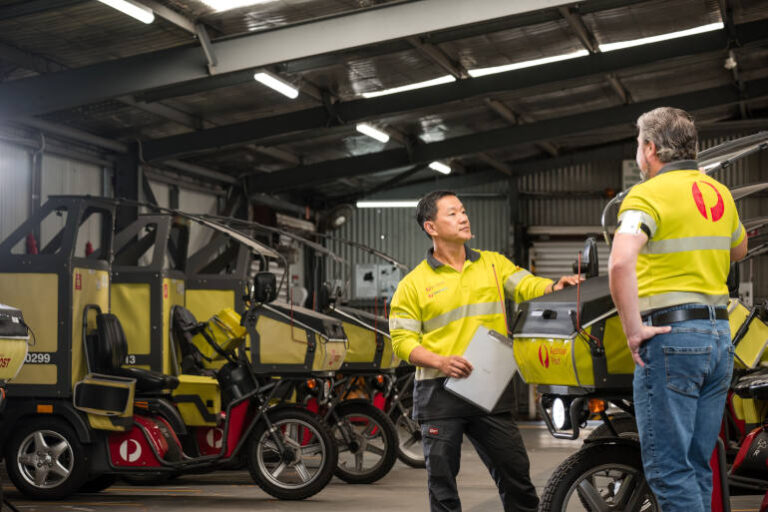Australia Post is setting the benchmark for sustainable fleet operations in Australia, operating the country’s largest electric delivery fleet with more than 5,100 electric vehicles currently in use. The transition is part of a broader strategy to meet its commitment to reach net zero carbon emissions by 2050—a goal the organisation is tackling head-on with innovation and long-term planning.
Diverse Fleet, Singular Mission
With a total fleet of over 12,500 vehicles, Australia Post’s operations span a wide range of vehicle types including electric motorbikes, electric delivery vehicles (eDVs), electric pushbikes, vans, trucks, and yard tugs. While not every vehicle is electric—yet—the organisation has embraced EVs across many categories where the technology is commercially viable.
“Our eDVs and electric bikes cover 15 million kilometres each year,” says Mitch Buxton, General Manager of Network Innovation and Assets. “That’s more than once around the earth every day, without using a drop of petrol.”
A Decade of Electric Mobility
Australia Post’s journey with EVs began in the early 2010s with electric pushbikes and expanded significantly in 2018 with the rollout of three-wheeled eDVs. Now in phase four of this rollout—with phase five on the horizon—the company continues to test and deploy next-generation vehicles to suit the unique needs of postal delivery.
Today, the electric fleet includes:
- 3,600+ eDVs
- 1,500 electric pushbikes
- 175 electric motorbikes
- 11 electric trucks
This commitment places Australia Post well ahead of most large operators in terms of EV integration.
Charging Forward: Infrastructure and Integration
One of the critical enablers of this shift has been charging infrastructure. Rather than rely on public networks, Australia Post ensures team members charge vehicles at their facilities at the end of each shift. This operational model ensures consistency, reliability, and optimal vehicle uptime.
“Facilities are equipped with all necessary charging infrastructure,” explains Buxton. “It’s a planned approach that supports daily delivery operations and keeps the fleet moving.”
Tackling the Tough Stuff
Despite its success, the EV journey hasn’t been without its challenges. For Australia Post, key issues include:
- Limited availability of purpose-built EVs suitable for Australian conditions.
- Navigating the regulatory landscape to approve and operate emerging vehicle models.
- Overcoming barriers to electrifying medium and heavy-duty trucks—especially for long-haul routes where range and charging access are major concerns.
The organisation has worked closely with OEMs to address vehicle availability and engaged with regulatory authorities to fast-track approvals for new models.
Buxton says, “Electrification of medium and large vehicles is particularly challenging in Australia’s vast geography. Issues like range limitations and limited public charging in regional areas make planning essential.”
Advice for Fleet Managers
For other organisations looking to start their EV transition, Buxton stresses the importance of infrastructure and real-world testing.
“You need detailed planning for infrastructure and testing to understand the real capability of EVs in commercial applications,” he advises. “It’s about making sure the vehicle can actually do the job it’s meant to do, day in and day out.”
Eyes on the Future
Looking ahead, Australia Post will continue testing and exploring new low-emissions technologies and vehicle platforms. With a clear roadmap to electrify its entire fleet, the organisation is focused on overcoming barriers in the hard-to-abate transport sector.
“As we advance towards our Net Zero commitment, electrification remains a critical lever in our decarbonisation strategy,” says Buxton.
A Model for Others
Australia Post’s EV leadership shows what’s possible when innovation, infrastructure, and investment align. Their journey offers practical lessons for other fleet operators—especially those navigating the early stages of EV adoption.
With every electric delivery, they’re proving sustainability can go hand-in-hand with service reliability, even at the scale of a national operation.






